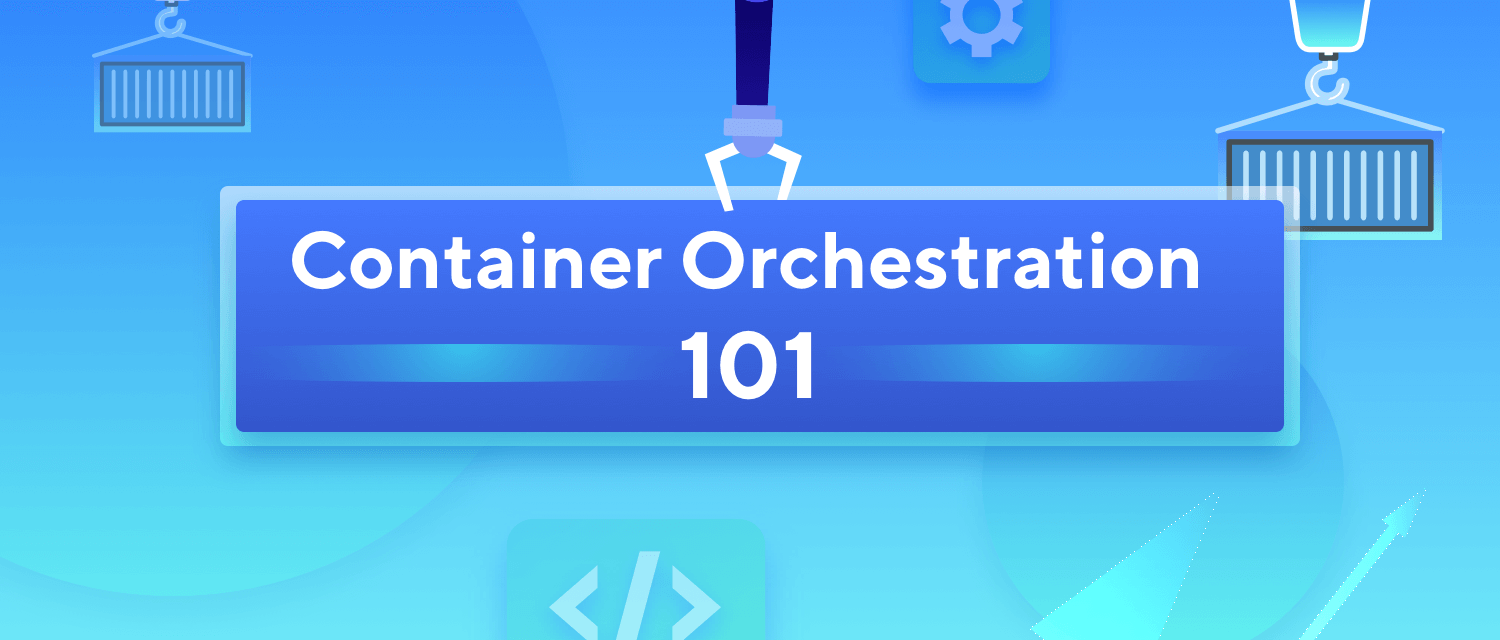What Is Container Orchestration? How It Works, Benefits, and Tools
Learn with AI
In the early 1970s, the concept of a container-based application emerged that transformed the IT world. For the first time, software was deployed consistently and reliably regardless of changes to the target environment (private or public cloud, personal computer, etc.). With the development of containers, container orchestration has become a trending topic in recent years, with successful applications from the likes of tech giants Facebook, Google, and Netflix, among others. This article provides you with fundamental knowledge about container orchestration, example use cases, and some available tools your organization should consider for scaling your business.

Container Orchestration Definition?
What is a container?
A container is a packaging mechanism that helps separate applications from the environment in which they run. In other words, containers help software to be efficient when moved from one computing environment to another. Those environments can vary widely, ranging from a private or public cloud to a data center and even a developer’s laptop.
Specifically, a container includes all the executables, binary code, libraries, and configuration files. Compared to virtual machines, a method of building the virtualized computing environment, containers are more lightweight and efficient.
So what is the container orchestration definition?
When the number of containers increases substantially, container orchestration comes into play, especially in the CI/CD pipeline. Container orchestration is an automated technique of managing, scheduling, networking, and monitoring containers. It is almost impossible to manage containers without the involvement of container orchestration when scalability is required. Container orchestration mainly concentrates on the life cycle of containers and the dynamics of the environment.
The following are some of the key features of a standard container orchestration platform:
- Health checks: The developers set up the health check for any service in the container to ensure the orchestration is properly deploying and managing hyper-scale applications.
- Resource allocation: In container orchestration platforms, resource allocation can be done automatically based on the application, container type, and micro-service.
- Updates and upgrades: Containers are upgraded and update resources automatically with zero downtime.
- Service discovery: This is the concept of how the micro-services or applications locate each other on the network. It helps the users reduce the configuration effort needed in setting up the process.
Why Container Orchestration?

Suppose four applications are running in the same language, operational system, and server. You are an administrator trying to manually deploy, scale, and enhance the security of the whole system to make sure everything is on track. It may sound like a piece of cake, but what about when there are hundreds or thousands of containers that run from public clouds to local servers, respectively? That’s a different story.
For that reason, scaling containers across the business is a daunting task without automated tools for processing, allocation, and security. Container orchestration was conceived for this very reason. The task is automatically performed without human intervention, so the challenge of scaling enterprise applications is executed efficiently.
Here are some of the benefits to implementing container orchestration:
- Simplifies and speeds operations: Containers are complex and challenging to manage, making it tough to control the system without container orchestration. This is one of the main reasons why organizations adopt this method.
- Enhances portability: Container orchestration only scales select functions of the application without changing the whole system.
- Improves security: Container orchestration reduces human error and external threats.
Learn more: Test Orchestration| What, why, and How
How Does Container Orchestration Work?
Container orchestration carries several benefits for improving a software development teams’ optimization and productivity. To make the most of container orchestration, it’s essential to fully understand the way it works.
Typically, container orchestration tools require your application configuration in YAML or JSON files. These files, specifically, help orchestration tools form the connection between containers as well as control storage capability. In addition, the files are branched and systematically managed to execute the same applications through multiple environments. Once containers run, the orchestrator watches over the whole process to ensure a consistent workflow.
Tools to Use for Container Orchestration

Kubernetes
Kubernetes is the biggest player in the container orchestration market. The Google-backed solution dominates the market and has quickly become the gold standard in container orchestration. Kubernetes allows DevOps practitioners to deliver cloud services as either Platform-as-a-Service (PaaS) or Infrastructure-as-a-Service (IaaS). A great example of implementing Kubernetes container orchestration is Katalon TestOps, which creates a smart and serverless solution for continuous testing.
Docker Swarm
Docker Swarm is more straightforward and less extensive than Kubernetes, making it simple and convenient for software development teams. Docker also provides integration with Kubernetes as an additional service to complete its product portfolio.
Apache Mesos
Trusted by Twitter, PayPal, and Uber, Apache Mesos is open-source software that was developed by the University of California at Berkeley. Because of its lightweight interface, Mesos is a great choice for scaling servers at a high level.
Start your automation journey
With the growth and popularity of the Google Cloud platform, the use cases for container orchestration are skyrocketing. As a result, software development teams feel more hands-off, and managing containers is no longer considered a burden. This article is a good starting point for beginners in this field, and organizations should consider which tool is best for scaling their business.
Learn more about Katalon TestOps to get started on your automation journey.
|
FAQs
What is container orchestration and why is it needed?
Container orchestration automates managing, scheduling, networking, and monitoring containers—especially critical when container numbers scale and manual control becomes impossible.
What key features do container orchestration platforms typically include?
Core features include health checks, automated resource allocation, zero-downtime updates, service discovery, and lifecycle management across dynamic environments.
How does container orchestration improve operations?
It simplifies complex workloads, increases speed and portability, reduces human error, and strengthens system security—especially essential in CI/CD pipelines.
How does container orchestration typically work behind the scenes?
Orchestration tools use YAML or JSON configuration files to define how containers connect, store data, and run across environments. The orchestrator monitors all containers to maintain consistency and stability.
Which tools are commonly used for container orchestration?
Popular tools include Kubernetes (the industry standard), Docker Swarm (simpler and lightweight), and Apache Mesos (suited for high-level server scaling).
